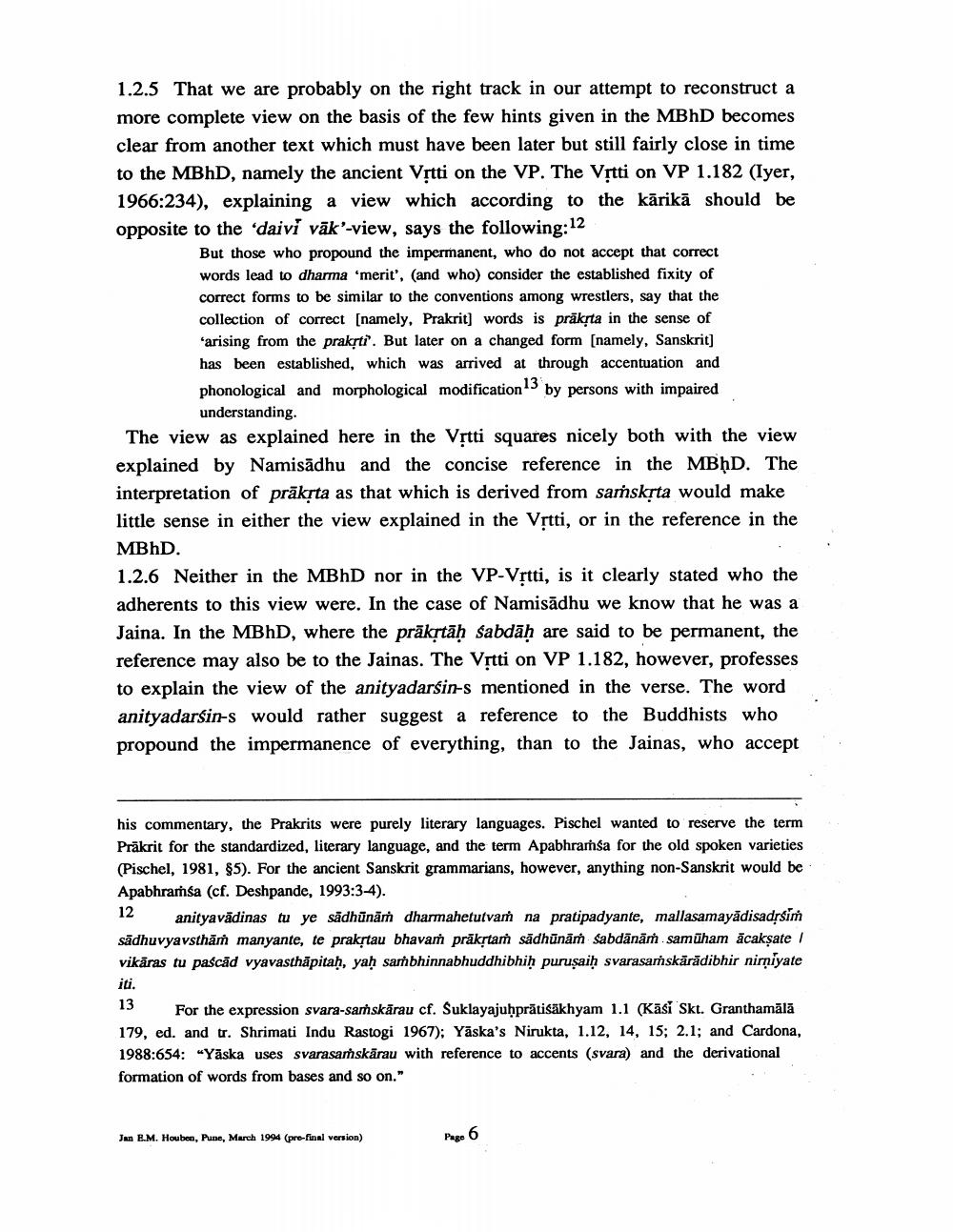________________
1.2.5 That we are probably on the right track in our attempt to reconstruct a more complete view on the basis of the few hints given in the MBhD becomes clear from another text which must have been later but still fairly close in time to the MBhD, namely the ancient Vṛtti on the VP. The Vṛtti on VP 1.182 (Iyer, 1966:234), explaining a view which according to the kärikä should be opposite to the 'daivi vāk'-view, says the following: 12
But those who propound the impermanent, who do not accept that correct words lead to dharma 'merit', (and who) consider the established fixity of correct forms to be similar to the conventions among wrestlers, say that the collection of correct [namely, Prakrit] words is prākṛta in the sense of arising from the prakṛti'. But later on a changed form [namely, Sanskrit] has been established, which was arrived at through accentuation and
phonological and morphological modification 13 by persons with impaired
understanding.
The view as explained here in the Vṛtti squares nicely both with the view explained by Namisādhu and the concise reference in the MBD. The interpretation of präkṛta as that which is derived from sarhskṛta would make little sense in either the view explained in the Vṛtti, or in the reference in the MBhD.
1.2.6 Neither in the MBhD nor in the VP-Vṛtti, is it clearly stated who the adherents to this view were. In the case of Namisādhu we know that he was a Jaina. In the MBhD, where the präkṛtāḥ sabdaḥ are said to be permanent, the reference may also be to the Jainas. The Vṛtti on VP 1.182, however, professes to explain the view of the anityadarsin-s mentioned in the verse. The word. anityadarsin-s would rather suggest a reference to the Buddhists who propound the impermanence of everything, than to the Jainas, who accept
his commentary, the Prakrits were purely literary languages. Pischel wanted to reserve the term Prakrit for the standardized, literary language, and the term Apabhramsa for the old spoken varieties (Pischel, 1981, §5). For the ancient Sanskrit grammarians, however, anything non-Sanskrit would be Apabhramsa (cf. Deshpande, 1993:3-4).
12 anityavādinas tu ye sädhūnām dharmahetutvam na pratipadyante, mallasamayādisadṛsim sādhuvyavsthāṁ manyante, te prakṛtau bhavam präkṛtam sadhūnām Sabdānāṁ samūham ācakṣate | vikāras tu pascad vyavasthāpitaḥ, yaḥ sambhinnabhuddhibhiḥ purusaiḥ svarasaṁskārādibhir nirniyate iti.
13
For the expression svara-saṁskārau cf. Suklayajuḥprātiśākhyam 1.1 (Kāsi Skt. Granthamālā 179, ed. and tr. Shrimati Indu Rastogi 1967); Yaska's Nirukta, 1.12, 14, 15; 2.1; and Cardona, 1988:654: "Yāska uses svarasaṁskārau with reference to accents (svara) and the derivational formation of words from bases and so on."
Jan E.M. Houben, Pune, March 1994 (pre-final version)
Page
6




